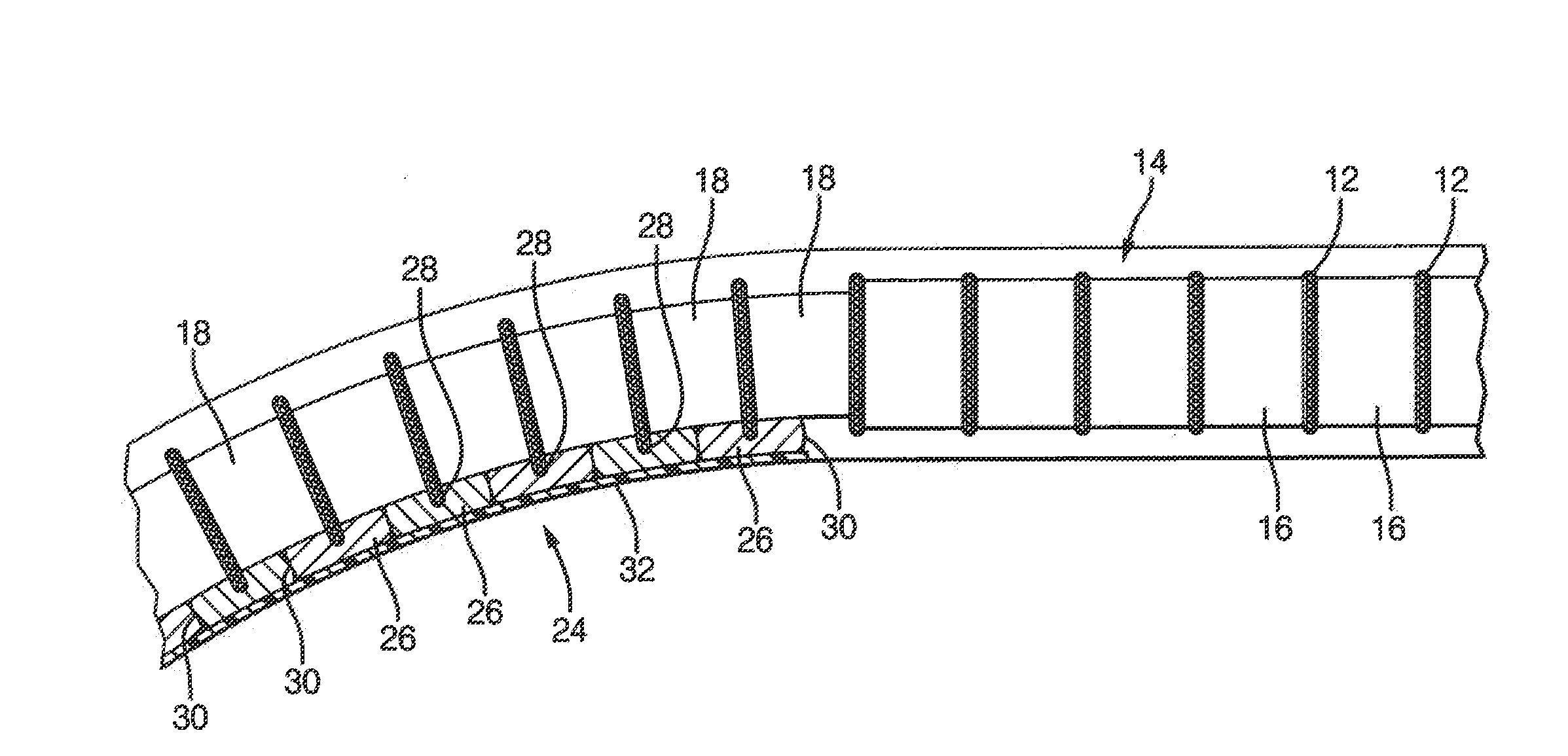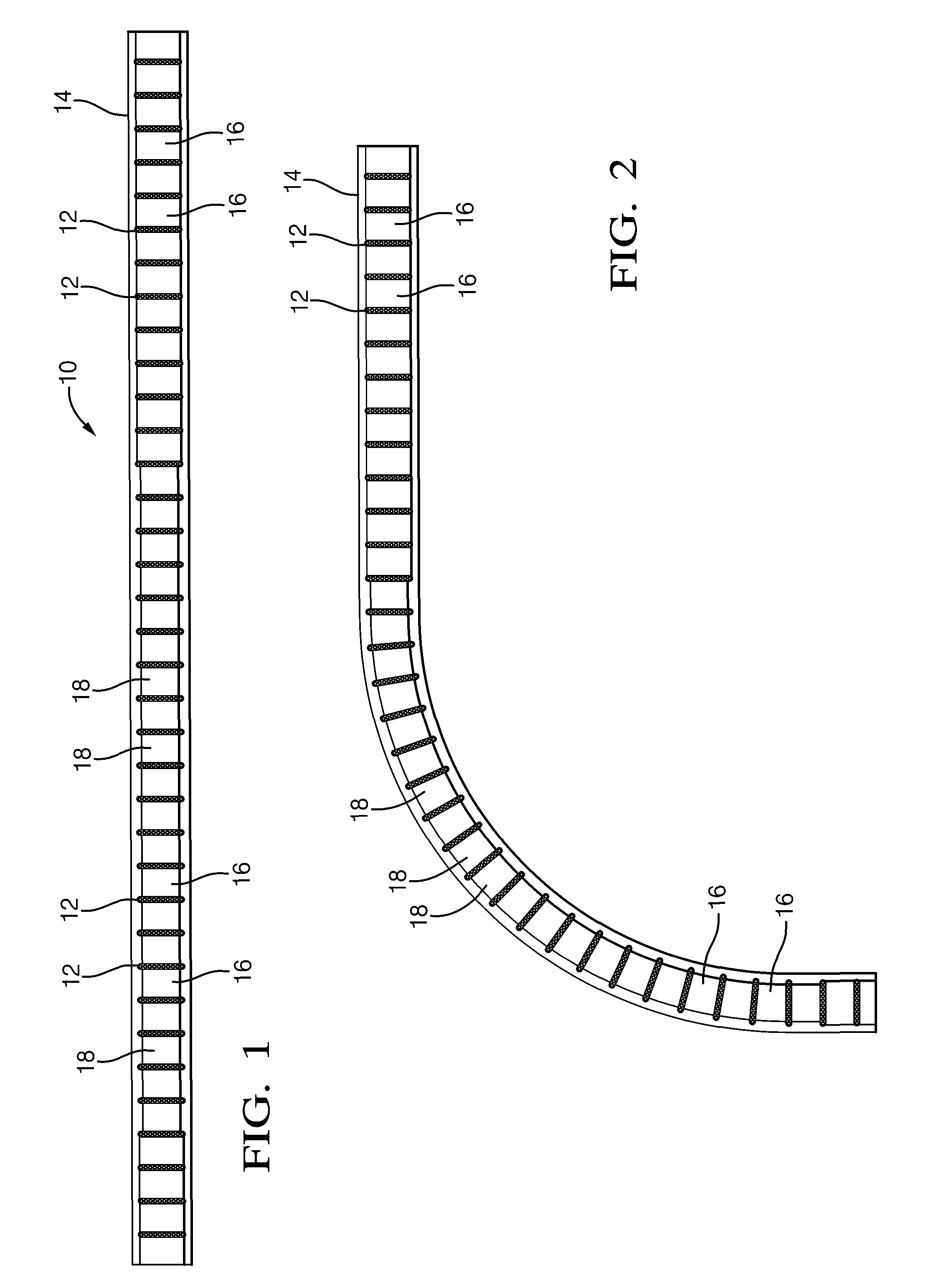Method and apparatus for bending a micro-channel heat exchanger
a technology of heat exchanger and microchannel, which is applied in the direction of heat exchange apparatus, etc., can solve the problems of reducing the efficiency of heat exchanger, requiring a more difficult bending operation, and the behavior of the tubes and fins at the “corner” where the manifolds are bent, so as to reduce the crushing of the air center and tighten the radius
- Summary
- Abstract
- Description
- Claims
- Application Information
AI Technical Summary
Benefits of technology
Problems solved by technology
Method used
Image
Examples
Embodiment Construction
[0014]FIG. 1 shows the flat, unbent core 10, which consists of flat, parallel, regularly spaced tubes 12 extending between parallel upper and lower cylindrical manifolds 14. Only a section thereof is shown, in the area where a bend would occur, and the remainder of the core would be identical. These basic parts of the core are conventional as to size, shape and material, typically a brazable aluminum alloy. The basic core differs only as to the particular corrugated air centers or fins that are installed between the tubes 12 encompassed by and within those areas intended to be bent. Outside of the bend areas, the fins 16 are also conventional as to size, shape and installation orientation. Most significantly, those fins 16 have a width substantially equal to the depth of the tubes 12. The remaining centers 18, those installed between those tubes encompassed by the bend areas, are significantly narrower and, in this embodiment, installed centrally between the tubes 12 so as to create...
PUM
| Property | Measurement | Unit |
|---|---|---|
| radius | aaaaa | aaaaa |
| area | aaaaa | aaaaa |
| clamping force | aaaaa | aaaaa |
Abstract
Description
Claims
Application Information
 Login to View More
Login to View More - R&D
- Intellectual Property
- Life Sciences
- Materials
- Tech Scout
- Unparalleled Data Quality
- Higher Quality Content
- 60% Fewer Hallucinations
Browse by: Latest US Patents, China's latest patents, Technical Efficacy Thesaurus, Application Domain, Technology Topic, Popular Technical Reports.
© 2025 PatSnap. All rights reserved.Legal|Privacy policy|Modern Slavery Act Transparency Statement|Sitemap|About US| Contact US: help@patsnap.com



